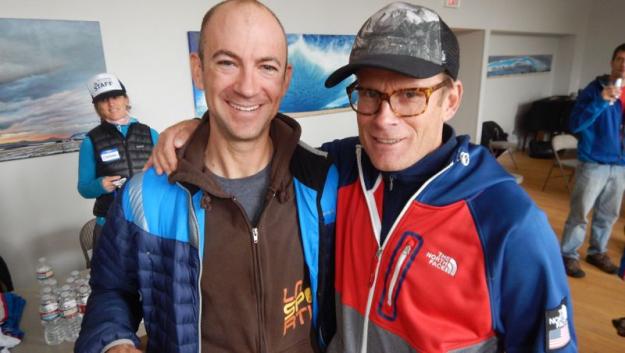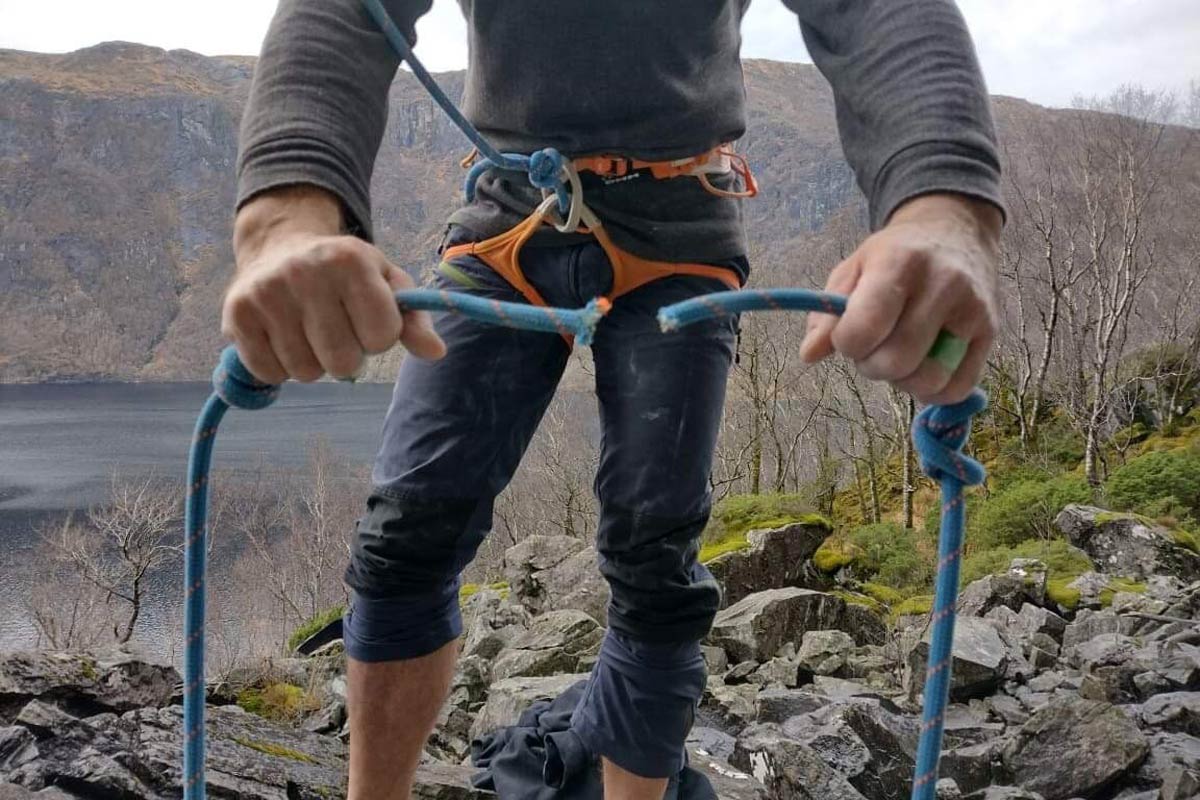American climber Will Mayo with Conrad Anker at launch of World Cup in Bozeman (Photo: UIAA)
North Face athlete Conrad Anker, one of America’s most famous climbers, is handling his newest challenge as Competition Director for the Bozeman phase of the UIAA Ice Climbing World Tour.
Anker made headlines around the world when he discovered the body of George Mallory, the early Everest explorer of the 1920s whose disappearance on the world’s highest mountain fascinated the world for so many years.
So here he was in Bozeman, Montana, getting down and dirty, drilling into place a victory podium, one of countless tasks he helped complete, to make the first time the UIAA Ice Climbing World Tour, presented by the North Face, stopped in North America happen.
As he would later put describe the trajectory; it all stated by hiking up snow mountains, climbing waterfalls, dry tooling and now his most recent role as Competition Director of the UIAA Ice Climbing World Tour presented by The North Face – the Bozeman phase.
“Competitive climbing is part of our culture,” said Anker. “Running up scaffolding is good fun. The difficulty routes were pretty amazing.”
Anker remembers watching UIAA-style ice climbing almost 14 years ago in 2000 in Saas Fee, Switzerland and thinking it was fun and exciting.
The tightly knit Bozeman climbing community, anchored by nearby Hyalite Canyon with more than 200 routes which people from across North America and the world come to climb, the annual Bozeman Ice Festival – during which the UIAA competition took place – is a natural fit.
“There’s a sense of community, camaraderie and love of ice climbing here,” says Anker.
The growing popularity of mixed climbing where people use ice axes and crampons to climb on rock, on the way to waterfalls, is part of the reason for the growth of the sport, he says.
Many athletes on the tour would later say that the crowds that showed up at the Emerson Cultural Centre to watch the finals were electric and among the most enthusiastic they had seen on the tour.
Among the challenges facing organizers was the unseasonably warm weather which made ice for the Speed competition impossible, but that can be overcome in the future, he said.
Another challenge is the lack of a permanent climbing structure. Organizers are, however, in the process of remedying that by beginning to raise funds for a $6 million permanent structure on the local fairgrounds – for people to train in – as part of a complex that includes a ice hockey rink.
Anker said he believes UIAA-style competition climbing here is to stay in and there is a growing crop of young American climbers who are challenged by the mental and physical toughness required to compete on the tour.
“We have a very strong field of athletes,” said Anker.
Among them is Justin Willis, a 19-year-local Bozeman climber who said he is hooked on the sport. He first competed in the tour in Busteni, a few years ago, said he and friends like Jacob Woodland, 20 – another Bozeman resident – have what it takes to win on the tour.
Talk to any American in Bozeman, and they are impressed with the skill, speed and strength of the Russians, Europeans and Koreans. Talk a bit more, and they aren’t in the least fazed by it.
They rest of the world has just been at it a bit longer, they say.
Watch out world, say the folks in Bozeman including Willis.
The Americans are coming.
“I feel good. I’ve trained hard this year,” said Willis. “I want to put the U.S. on the scoreboard.”



